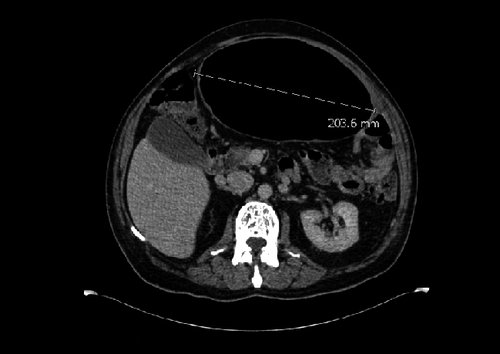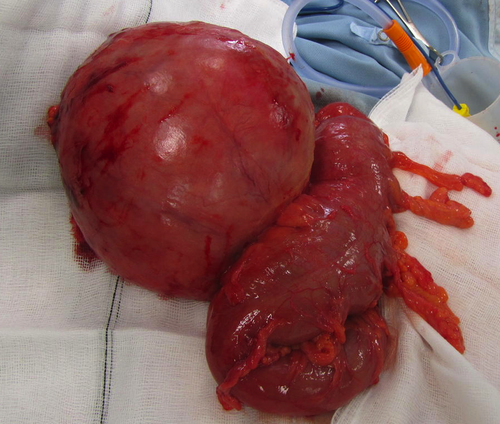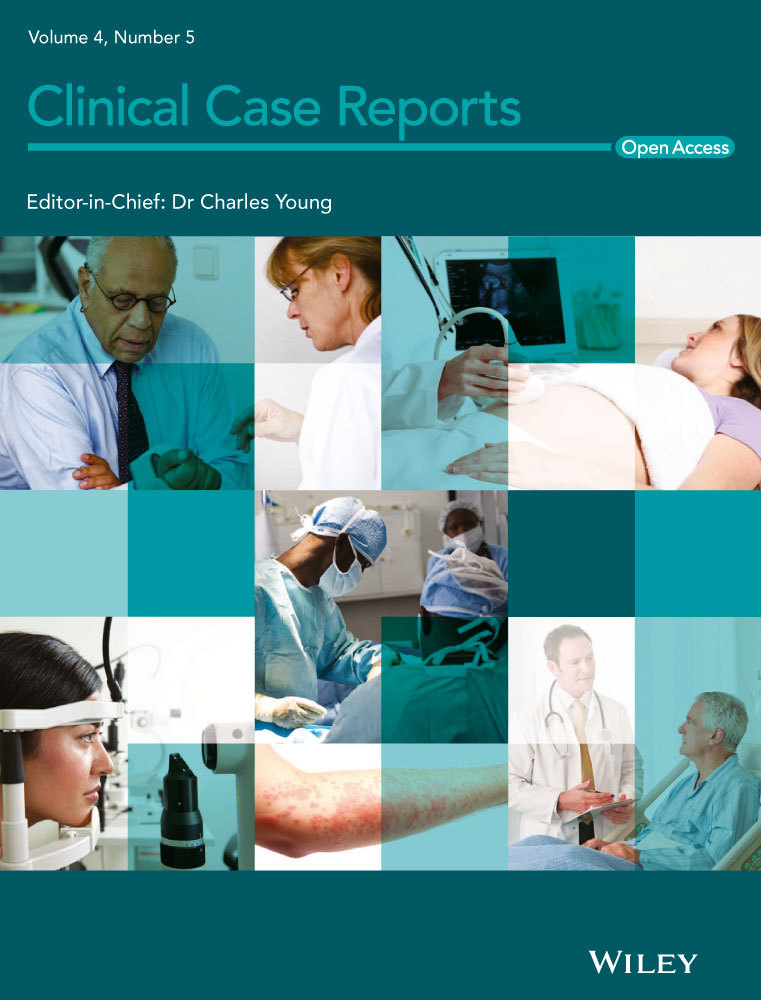Giant diverticulum- A rare complication of a common surgical condition
Key Clinical Message
A gentleman presented with abdominal distension and pain. CT confirmed a 20 cm sigmoid diverticulum. A giant diverticulum, typified by diverticula greater than 4 cm, often requires colonic resection. Fewer than 200 cases have been reported, most measuring 7–15 cm. I present a rare complication of a common surgical condition with images.
Introduction
What is this condition?
Giant colonic diverticulum
A 65-year-old gentleman presented with abdominal distension and pain. CT confirmed a 20 cm sigmoid diverticulum (Fig. 1). Although he was clinically well a sigmoidectomy was performed due to the risk of perforation (Fig. 2). The patient was discharged 3 days later.


Giant diverticulum, typified by diverticula greater than 4 cm, is a rare manifestation of diverticular disease of the colon. It affects the sigmoid in 90% of cases 1. Since it was first described by Hughes and Green in 1953, there have been fewer than 200 cases reported with most measuring between 7 and 15 cm. Although etiology is not clearly understood, it is believed that a one-way valve is created at the communication between the colon and the sac leading to air entrapment and a gradual distension of the sac 2. Treatment usually entails surgery: colonic resection with a primary anastomosis.
Conflict of Interest
None declared.




